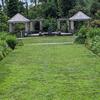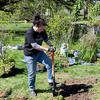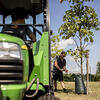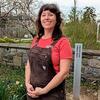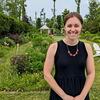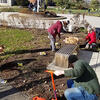How do you have an arboretum without any trees? It was a question insensitively posed to Kathy Salisbury, Director of the Ambler Arboretum of Temple University, by a visitor to campus not long after an EF2 tornado felled hundreds of trees on campus on September 1, 2021.
Salisbury, her dedicated staff, Temple Facilities Management, students, and an army of arborists and volunteers have been answering that question since September 2, 2021 — replant, regrow, recover.
Coupled with a vital and diverse collection of trees, plants and gardens — with hundreds of new trees planted — the Ambler Arboretum remains as it has always been, an essential location for unique hands-on learning and a place for rejuvenation and healing in nature.
As the Ambler Arboretum and Ambler Campus head toward two years since the tornado changed everything, one word has been front and center for Salisbury and her team —Stephanie Bross, Gardens Manager; Michael Hitchings, Lead Horticulturist; Anne Brennan, Plant Records Curator; Samatha McGuriman, Arboretum STEM Programs Specialist; and Drew Schoen, Horticulture Technician — Progress.
Progress was also the theme of the 2023 Ambler in Bloom the Ambler Arboretum’s annual garden party fundraiser.
According to Salisbury, the 2023 event invited visitors to “see how we’re progressing post-tornado by visiting five garden spaces and learning about our vision and plans for their future.”
“Our visitors’ journey at Ambler in Bloom took them through the future locations of the reimagined Woodland Garden and Sustainable Wetland Gardens. They also saw the new areas for the planned Honor Grove, Campus Heritage Garden and the Climate Resilient Landscape,” she said. “We have engaged Donald Pell Gardens to help develop conceptual designs for five new and reimagined spaces throughout the Arboretum. While they are helping us come up with ideas for designs and programming for these spaces they are also helping us understand movement through the Arboretum and connecting the gardens in ways that make sense for our variety of users.”

